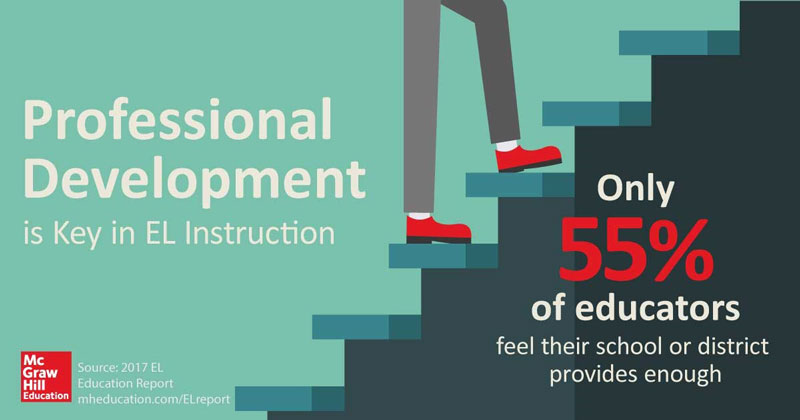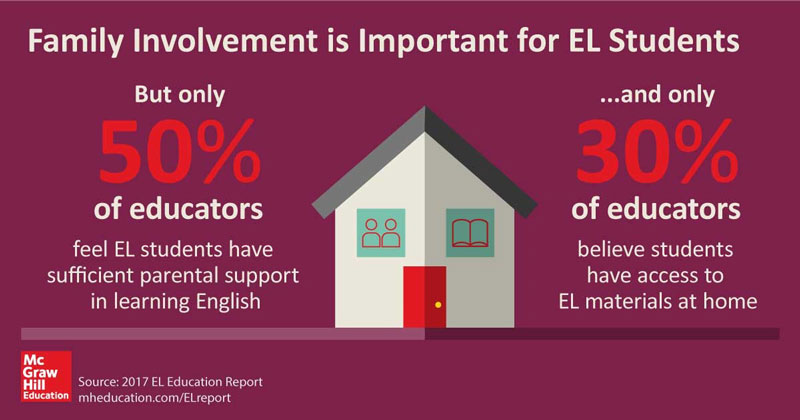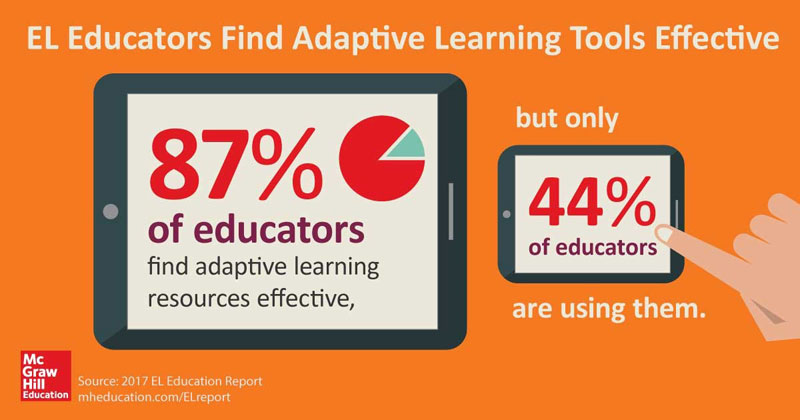My Account Details
Charting a Bright Future for K-12 English Learners
Educators today are tasked with serving an increasingly diverse classroom. As the demographics of the United States continually evolve, these changes are reflected in K-12 classrooms.
Educators today are tasked with serving an increasingly diverse classroom. As the demographics of the United States continually evolve, these changes are reflected in K-12 classrooms. In perhaps no other space is the concept of finding strength through diversity more apparent than a room full of students. With unique perspectives, talents, and stories, we know that these new generations of students are pushing each other – and their educators – to challenge conventional ways of thinking, interacting, and learning. In addition, students with different experiences, backgrounds, and skill-sets have varying learning needs, and require educators to understand those needs as they create instructional plans and learning tools.
English Learners (ELs) are the fastest growing population in education, and for many educators, effectively serving these students is a top priority. To help educators meet the needs of this growing population, McGraw-Hill recently released its English Learner (EL) Education Report. The report outlines key challenges educators face in EL education, identifies instructional opportunities, and provides an overview of the current K-12 EL landscape. As a group that’s passionate about the future of these children, we’re eager to share the findings in our report with education leaders to help them empower EL teachers and students moving forward. Here are a few of the most important findings from the report:
Educators Seek More Professional Development

According to the results from the report, continued professional development is a key opportunity for improvement in EL instruction. Only 55% percent of respondents feel that their school or district provides enough professional development to support EL educators. This sentiment is particularly strong among newer educators: only 36% of newer teachers believe they have received enough EL professional development and training.
In crafting plans for EL professional development, district leaders should note that 71% of respondents rated “research-based instructional methods for English Learners” as the most-desired and potentially most-impactful type of professional development.
Family Involvement is Key to EL Student Success

99% of respondents believe that family support and engagement are important to EL success. But for many EL families, communicating with their child’s school or helping with homework presents a challenge, because they’re often limited in English proficiency themselves. Per the survey, 74% of respondents believe that parents of the majority of EL students in their school or district are learning English, but not proficient in the language. Only 28% of respondents reported that they have the same cultural background of the majority of EL students in their school or district. When ideating ways to strengthen a student’s learning experience in the home, district leaders may want to think about making lines of communication more accessible to families with varying linguistic backgrounds.
Digital tools can serve as a strong and flexible solution. Technology can facilitate simple translations of materials that are sent home to make classroom information or news more accessible to parents. Open houses, where parents are invited to come explore their children’s schools, can help families with EL students feel welcomed and connected.
Adaptive Technology Viewed as Effective in EL Education

A large percentage of respondents consider digital learning tools to be effective in EL instruction. Adaptive learning tools are particularly exciting with 87% of respondents finding adaptive learning resources to be effective. However, only 44% of respondents are using adaptive tools. Adaptive technologies provide a crucial advantage over other digital tools, in that they identify what a student knows, doesn’t know, and needs to learn next.
Many programs can deliver highly personalized instruction for an entire classroom through one on one feedback. They also provide valuable data insights, thereby helping the teacher to deliver more targeted and meaningful instruction. In formulating a plan to support EL students and their teachers, district leaders could consider how they can integrate adaptive technologies into an instructional plan alongside other audio, visual, and print tools to meet every learner’s needs.
The Future is Bright for English Learners
Despite obstacles, educators are hopeful about the future of EL students. 89% of respondents are optimistic about the continually improving academic performance of English Learners in their school or district. With continued attention to professional development programs, open and productive communication between teachers and students, and the integration of impactful technologies into EL instruction, this optimism should prove to be warranted. I’m confident that the vision of district leaders, the talent of our classroom teachers, and the resolve of our students will forge a path for generations of English Learners to come.
This article was originally published in MDR’s School of Thought Blog.